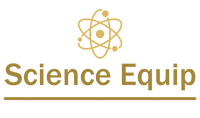Wood corks have been utilized for centuries as a versatile material that finds applications in numerous industries. With their unique properties and environmentally friendly nature, wood corks have become a staple in fields ranging from lab equipment to cork stoppers. So how is the cork produced? Let's delve deeper into its properties, capabilities, and applications. Due to the diverse wood cork uses, its importance and functionality in various sectors are opening up more opportunities.
Wondering how cork comes into being?
The major fact is that cork is a 100% natural, organic material made of the bark of the oak tree. However, it is not simply wood. Going deeper, the cork oak tree is one of the most common tree species from which cork is extracted. But without harming the tree, which would be detrimental to its normal development.
That process is called uncorking, where the outer layer of the tree or bark is removed with all the corky properties for wood cork uses. The new layer of bark with the same thickness and properties would produce to start uncorking every 9 years. Hence, using the cork for lab equipment or other industrial application is the safest, most ecological material, especially if you are environmentally conscious.
What are the top applications of wood cork?
-
Wine and Beverage industry
One of the most well-known wood cork uses in the wine and beverage industry. Wood Cork stoppers provide an effective seal that helps preserve the quality and flavor of wines, spirits, and other beverages. Wood corks, with their ability to expand and contract in response to temperature changes, create an airtight seal that allows wines to age gracefully.
- Lab Equipment
Wood corks also play a crucial role in lab equipment. They are commonly used in glassware to secure and seal various apparatus, such as test tubes, beakers, and flasks. Wood corks provide a reliable seal, preventing any leakage or contamination during experiments. The inert nature of wood corks makes them ideal for lab applications, as they do not react with the chemicals commonly used in experiments.
- Construction and insulation
The insulating properties of wood corks have made them a valuable material in the construction industry. When granulated or shredded, wood corks can be used as an eco-friendly alternative to traditional insulation materials.
- Fashion and design
Art, crafts, and fashion worlds have also found wood cork uses. Their lightweight and easy-to-handle nature makes them perfect for crafting unique and visually appealing items. Their unique texture and appearance have inspired designers to incorporate them into jewelry, handbags, and footwear accessories. The use of wood corks adds a natural and distinctive touch to these products, reflecting a sustainable and eco-friendly ethos.
Wood corks have proven to be a versatile and valuable material in various industries. From their traditional use as wine stoppers to their application in lab equipment, construction, art, and more, wood cork uses continue to demonstrate their adaptability and eco-friendly qualities. Whether it's preserving the quality of fine wines or reducing carbon footprints through insulation, wood corks contribute to a greener and more sustainable future, making a profound impact across diverse industries.
